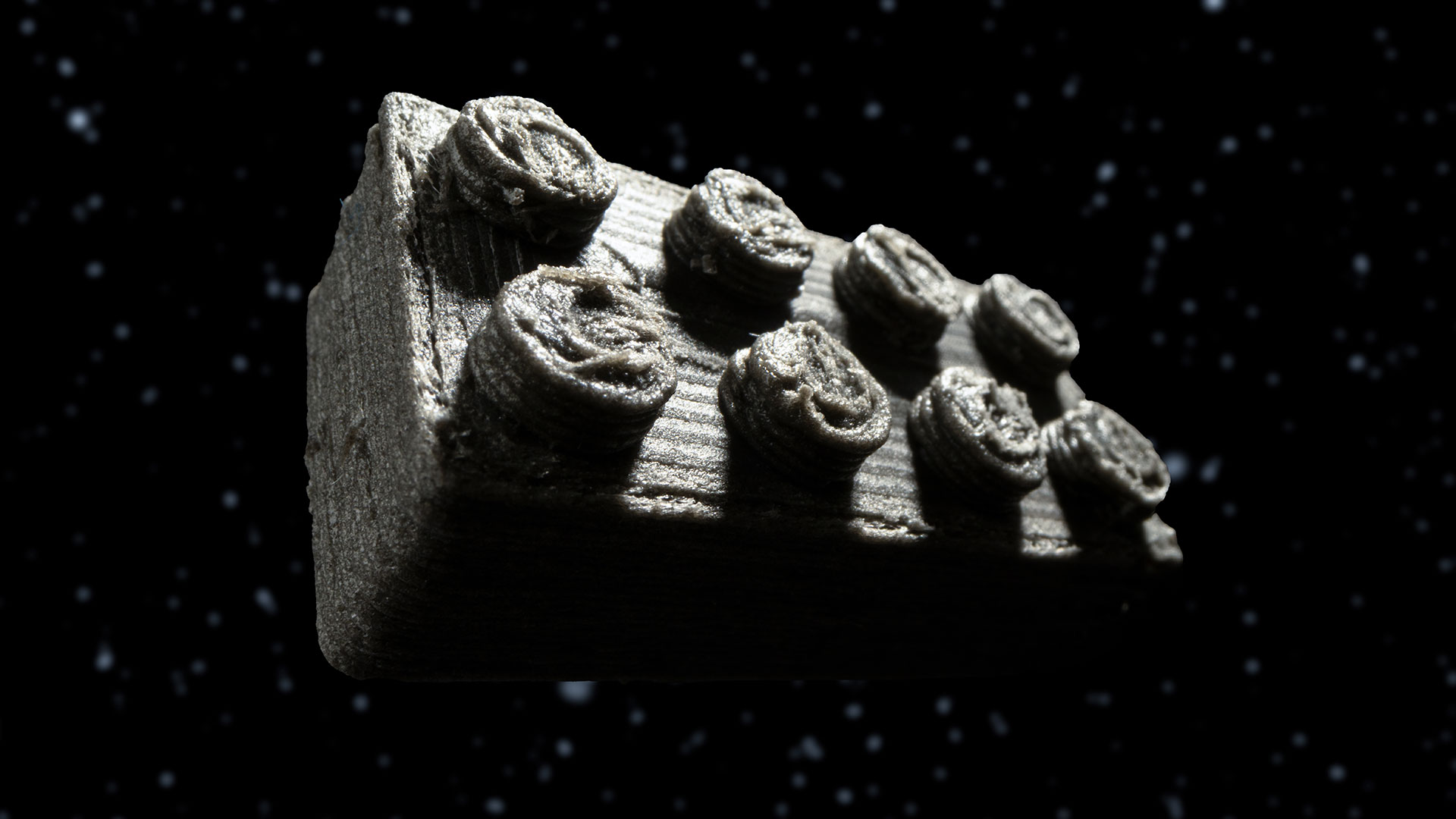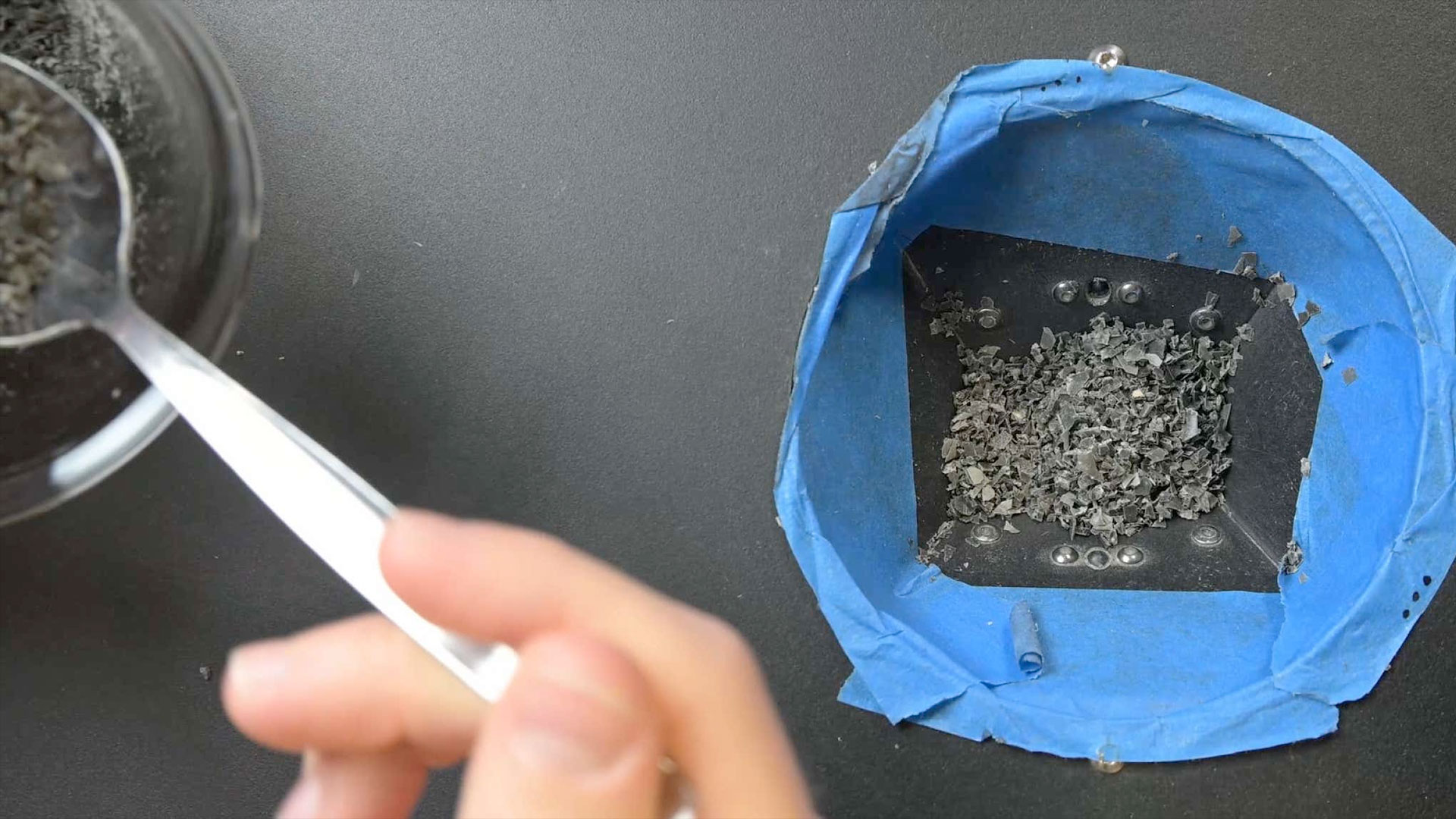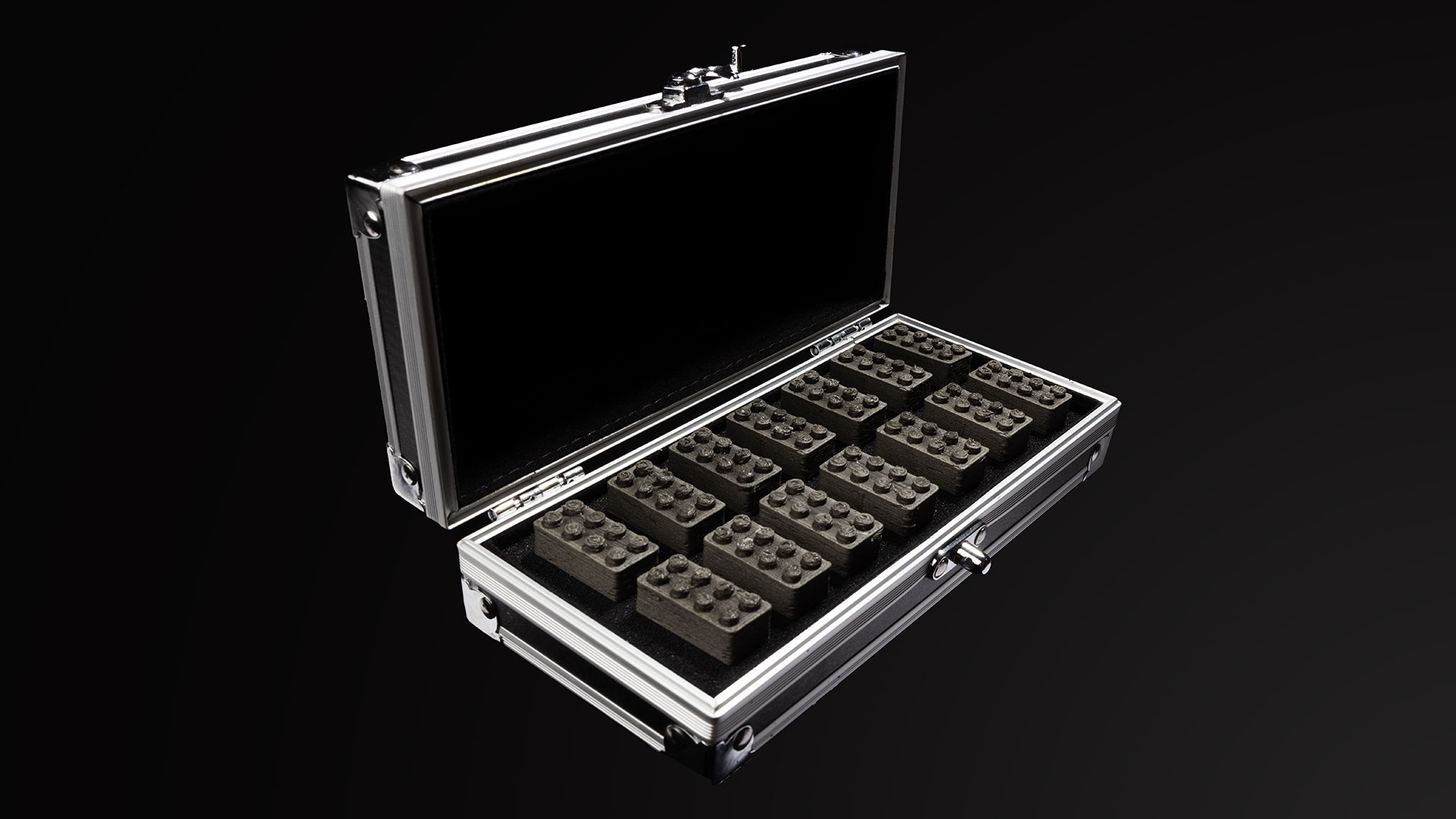'ESA Space Bricks' landing at Lego Stores could help build real Artemis moon base
'ESA Space Bricks' will go on display for three months at select Lego Stores.

Scientists may have just found the "building bricks" for future moon bases in the toy store — and the public can soon see them there, too.
European Space Agency (ESA) researchers discovered more than inspiration when they looked at Lego sets while working on possible designs for habitats, launch pads and other structures for astronauts to use on the moon as part of NASA's Artemis program. Using the iconic plastic pieces as a model, the ESA team used 3D printers to create similar bricks made in part from meteorite to show that the tubes at the bottom wedge together with the studs at top, just like the toy.
"My team and I team love creative construction and had the idea to explore whether space dust could be formed into a brick similar to a Lego brick so we could test different building techniques," said Aidan Cowley, ESA's science officer, in a statement released by Lego on Tuesday (June 18). "The result is amazing, and, whilst the bricks may look a little rougher than usual, importantly the clutch power still works, enabling us to play and test our designs."
The resulting "ESA Space Bricks" will next go on display for three months beginning June 24 at select Lego Stores in the United States, Canada, the United Kingdom, Germany, France, Denmark, Spain and Australia, as well as at the Lego House in Billund, Denmark (see below for a full list of locations).
"No one has ever built a structure on the moon, so we have to work out not only how we build them but what we build them out of, as we can't take any materials with us," said Cowley.
When on the moon, the natural resource to use would be regolith — the layer of loose rock and dust that covers the lunar surface. A limited amount of authentic regolith is on Earth, having been brought back by the six Apollo flights that landed U.S. astronauts on the moon, three robotic Russian Luna missions and China's Chang'e 5 sample return probe. (Chang'e 6 is set to return to Earth the first material collected from the moon's far side, on June 25 or thereabouts.)
Related: The moon on Earth: Where are NASA's Apollo lunar rocks now?

As a stand-in for regolith, the ESA team used the dust from a 4.5 million-year-old meteorite, which was added to polylactide (a biodegradable polymer) and lunar regolith simulant to form the feedstock for their 3D printers. The meteorite was originally found in Northwest Africa 24 years ago. Classed as an L3-6, the rock was a brecciated stone, comprised of large metal grains, inclusions, chondrules and elements.
With their structural testing complete, the ESA Space Bricks have been given a new mission: "to inspire the builders of tomorrow of how Lego brick building can help solve out-of-this-world problems."
"With the ESA team using the Lego System-in-Play to advance space travel, it shows kids the sky really is the limit when it comes to Lego brick building, and we hope it encourages children to have a go at building their own space shelters!" said Daniel Meehan, creative lead at the Lego Group.
Fifteen of the ESA Space Bricks are landing on display at Lego locations around the world, including:
United States
Get the Space.com Newsletter
Breaking space news, the latest updates on rocket launches, skywatching events and more!
- The LEGO Store, Mall of America, Bloomington, Minnesota
- The LEGO Store, Disney Springs, Florida
- The LEGO Store, Water Tower Place, Chicago
- The LEGO Store, Disneyland Resort, California
- The LEGO Store, 5th Avenue, New York
Canada
- The LEGO Store, West Edmonton
United Kingdom
- The LEGO Store, Leicester Square, London
Germany
- The LEGO Store, München Zentrum
- The LEGO Store, Cologne
Denmark
- The LEGO Store, Copenhagen
- LEGO House, Billund
Spain
- The LEGO Store, Barcelona
France
- The LEGO Store, Paris
Netherlands
- The LEGO Store, Amsterdam
Australia
- The LEGO Store, Pitt Street Mall, Sydney

ESA has partnered with NASA to carry out the Artemis program, which has the goal of returning humans to the moon for the first time since the Apollo missions more than 50 years ago. Together with Canada, Japan and the United Arab Emirates (UAE), the 22 ESA member states are supporting the assembly of the Gateway, a human-tended lunar orbit platform that will enable landing astronauts at the moon's south pole.
Follow collectSPACE.com on Facebook and on Twitter at @collectSPACE. Copyright 2024 collectSPACE.com. All rights reserved.
Join our Space Forums to keep talking space on the latest missions, night sky and more! And if you have a news tip, correction or comment, let us know at: community@space.com.

Robert Pearlman is a space historian, journalist and the founder and editor of collectSPACE.com, a daily news publication and community devoted to space history with a particular focus on how and where space exploration intersects with pop culture. Pearlman is also a contributing writer for Space.com and co-author of "Space Stations: The Art, Science, and Reality of Working in Space” published by Smithsonian Books in 2018.In 2009, he was inducted into the U.S. Space Camp Hall of Fame in Huntsville, Alabama. In 2021, he was honored by the American Astronautical Society with the Ordway Award for Sustained Excellence in Spaceflight History. In 2023, the National Space Club Florida Committee recognized Pearlman with the Kolcum News and Communications Award for excellence in telling the space story along the Space Coast and throughout the world.
-
JPL_ACE Nice idea but you shouldn't use polylactide as binder as it is biodegradable and likely to degrade just from the sunlight. Not very realistic. It would be a nice research project to find a binder made from Lunar material, such as water (from ice) and some extractable chemicals in the dust. Another nice project would be to find a "brick" shape that allows curved structures (iglu comes to mind).Reply -
Unclear Engineer Th e "binder" seems to be the issue, both for durability and availability.Reply
There was another article (somewhere) about using solar power to melt and fuse regolith to make lunar roadways and other surfaces. I wonder it that would be more feasible.
The tradeoff seems to be whether it takes less fuel and flights to get enough binder or enough solar cells to the lunar surface to make a specific amount of bricks for a project.
Although solar cells last for a long time, they do degrade. So, it is not a way to get unlimited bricks once there are solar cells delivered to the Moon. And, getting the power to fuse regolith would require a lot of solar cells, or it would be a very slow process to make a pile of bricks.
Another idea might be a solar furnace, with mirrors located in rings around an elevated vat to heat the vat to temperatures sufficient to melt the regolith. But, I am not sure we could make a vat that would not melt along with the regolith. If feasible, regolith dust could be dumped in the top of the vat and what is really rock lava could be poured out of the bottom into molds to make the bricks, or maybe into a 3D printer of some type. But, the high temperatures necessary for that might make it infeasible to build the necessary tools to withstand the heat.










